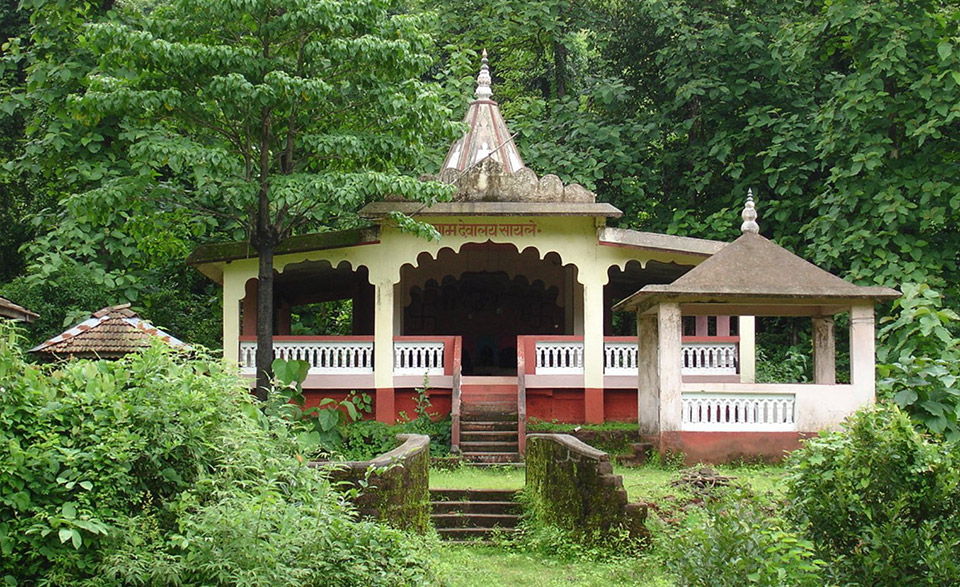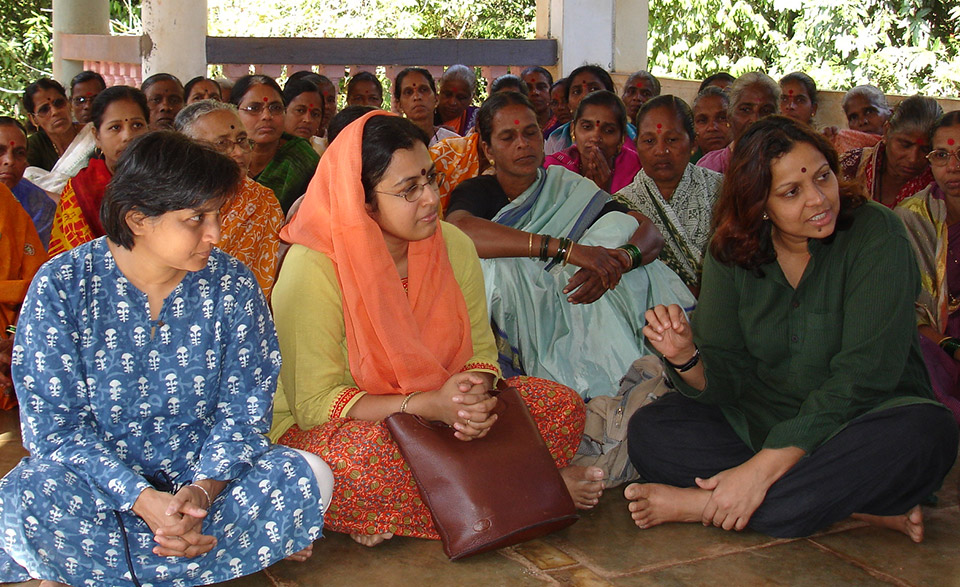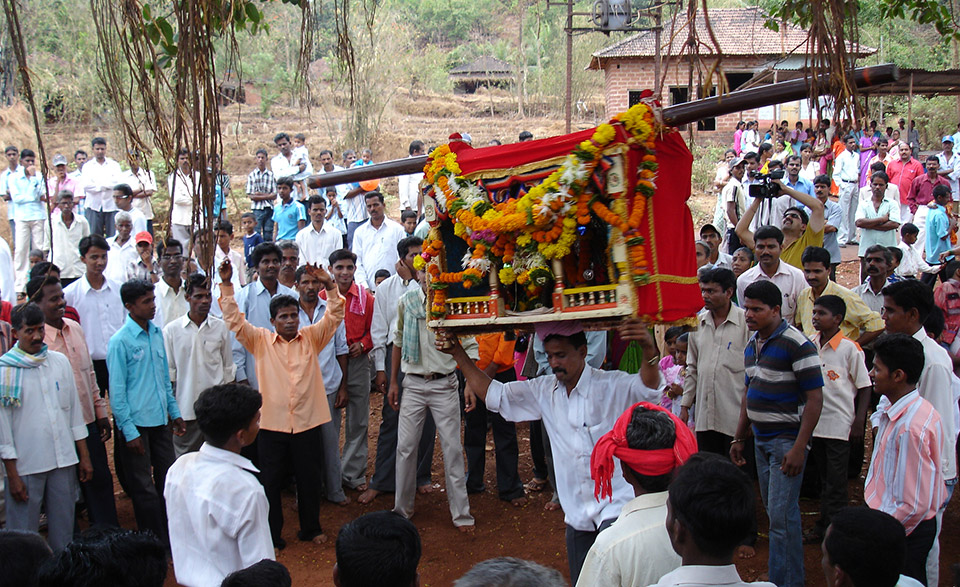На север Западен Ghats на Индија во државата Махараштра е еко-регионот формирање на глобалната биодиверзитетот жариште. На високо биодиверзитетот на регионот е надополнет со висока разновидност во локалните традиции во регионот. Речиси секое село во регионот Sahaydri-Konkan има најмалку една света шумичката со површина движат од само неколку до стотици хектари. Свети шуми преживеале за многу стотици години, и денес делуваат како резервоари на биодиверзитетот засолниште многу растителни и животински видови, како скоро мрежа на релативно непречено дивиот свет.
Загрозени.
Закани
Закани за свето градини потекнуваат главно од модернизацијата и глобализацијата. Мали свето градини често се смета како мали незначителни закрпи на шумите кои го попречуваат развојот на работа. Многу свети шуми се уништени, и само вештачки храмови биле зачувани. Примери за причините зошто овие шуми се отстранети се вмешување, изградба на патишта, пасење, изградба на брани и канали и урбанизација. Одлуки за менување или отстранување на одредени шумичката често доаѓаат од околните села каде се зголеми западните влијанија предизвика слабеење на религиозни верувања дека се шири низ регионот.
Визија
Регионот е веројатно да имаат корист од соодветна форма на ко-управување на светите шуми, од страна на локалните Чувари како и со други регионални чинители. Најмногу ветува начин да се постигне ова е преку повторно воспоставување културните норми и зајакнување Чувари, локалното население и традиционалните владеење тела. Долгорочна работа е важно да се создаде солидна сојузи помеѓу различни партии. Континуирана финансиска поддршка е потребна заедно со силна тек олеснување на процесите кои се вклучени. Овие можат да бидат ефективни средства да го поминат на светите шуми и нивниот biocultural значење за идните генерации.
Акција
AERF has worked specifically on up scaling and replication of the long-term management of sacred groves with community involvement in different villages. They have attempted to revive the traditional approaches to nature by raising locals’ awareness and by developing incentives for management. They have brought together stakeholders at both block and district levels.
Политика и право
The legal ownership of the groves is currently with the state revenue department.
The protection of sacred groves in the region cannot use the same legal system as that for forest protection because the rules for management are different. In some sacred groves, limited allowance of extraction is established for specific non timber forest products. Rules and regulations defined by the ancestors are not written down, and are sometimes twisted for short term benefits.
Чуварите на имот
Traditional conservation practices such a sacred forests are an important component of the landscape in three districts of the north Western Ghats Maharashtra state. The groves are mostly owned by villagers who are still able to survive on their lands without having to develop their sacred groves. Management of the sacred grove including religious functions and protection is supervised and monitored by a group of village elders. The cultural significance is high, and most of the community festivals are celebrated in the temple situated in the sacred grove. Some of the groves also function as burial grounds and crematoriums and some are abodes of ghosts and deities. Except for water, people do not use any resources from these groves as is done in other regions in India.
Коалицијата
The Applied Environmental research Foundation (AERF) has been working on sacred groves conservation in North Western Ghats for over 15 години. In Sangameshwar block, AERF has revived the tradition of sacred groves and involved local people in planning as well as implementation for long-term conservation of the sacred groves.
Конзервација алатки
Co-management is one of the important starting points, facilitating mutual understanding between parties. Stakeholder sessions have been organised, making different groups enthusiastic and curious about the sacred groves. The media play an important role in building consensus and awareness about environmental issues, but they could discuss more topics on sacred groves. AERF stimulates local communities to revive their ancient traditions through participatory work. They used local traditional myths, dance, song and ceremony to develop a common understanding of villagers’ cosmovision, restoring it where needed to support the maintenance of the sacred groves. дополнително, they make biodiversity inventories to reveal the gravity of the situation.
“Decisions such as seeking permission for using the sacred groves resources for the village well-being are generally taken in the temple”.
- Archana Godbole, Director of the Applied Environmental Research Foundation.
- Godbole, Sarnaik, Punde, (2010) Culture-based conservation of sacred groves: Experiences from the north Western Ghats, Индија, во Verschuuren, Диви, McNeely и Овиедо, Свет природни локалитети: Зачувување на природата и културата, Земјата скенирање, Лондон.
- Applied Environmental Research Foundation in Pune, Индија: www.aerfindia.org








